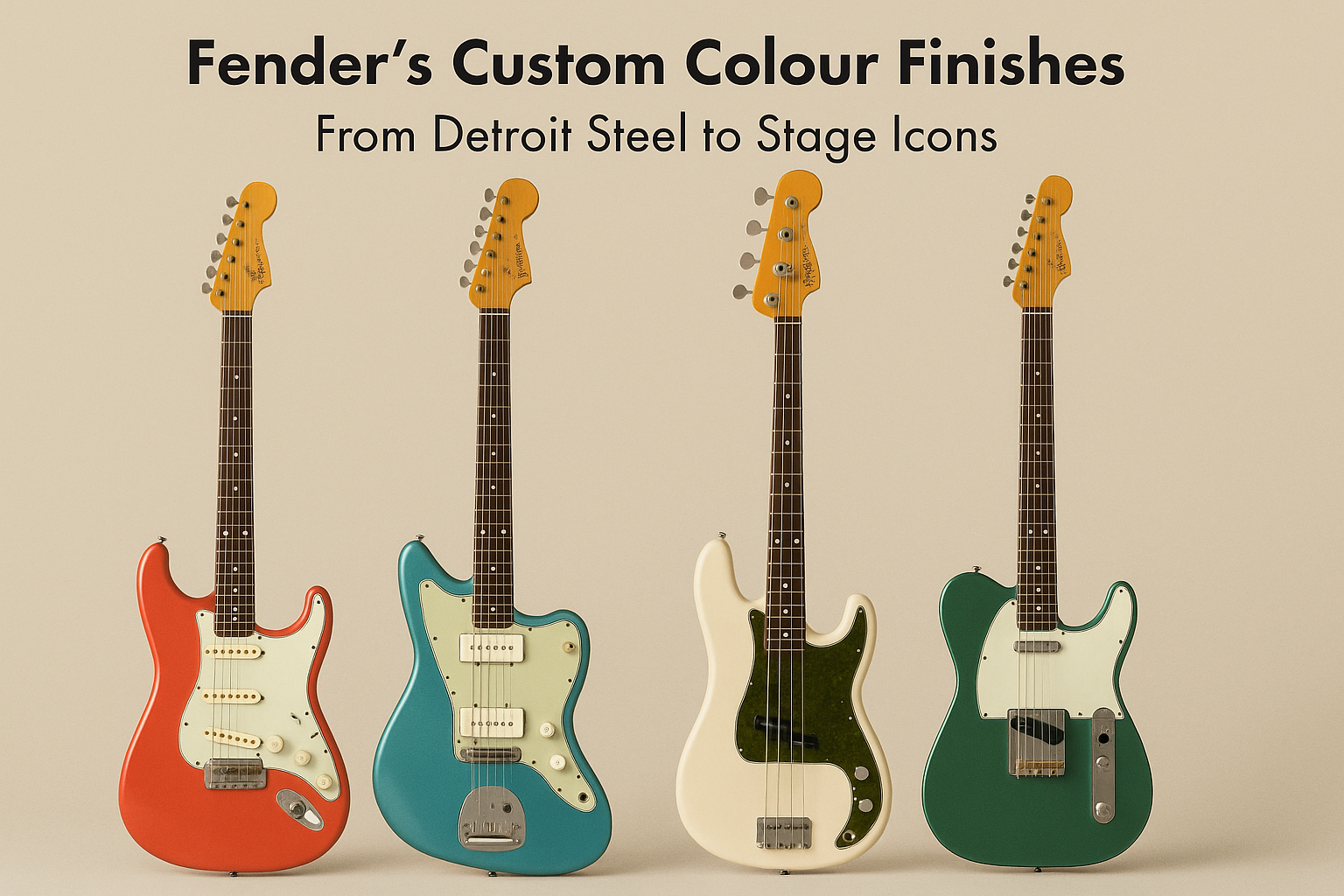When Leo Fender set out to redefine the electric guitar in the 1950s, he wasn’t just innovating in form and function — he was about to make it fashionable too. While the earliest Telecasters and Stratocasters came in utilitarian blonde and sunburst finishes, it wasn’t long before Fender introduced a palette of bold automotive-inspired colours known as Custom Colours. These vibrant finishes helped define the image of rock ’n’ roll in the ‘50s, ‘60s, and beyond.
Born in Detroit, Worn on Stage
Fender’s Custom Colours were directly inspired by the automotive world. In an era when car culture reigned supreme, Leo Fender and his team took cues from General Motors’ DuPont Duco and Lucite colour catalogs — the same nitrocellulose lacquers being sprayed on Cadillacs and Chevrolets. The idea was simple but revolutionary: offer musicians the same level of visual flair they were seeing in car showrooms.
The Custom Colour chart officially debuted in 1960 and evolved through the mid-60s. Some of the most iconic shades included:
-
Fiesta Red – Borrowed from Ford’s 1956 colour lineup, this warm coral-red became synonymous with early British Invasion players like Hank Marvin.
-
Lake Placid Blue – A shimmering metallic blue introduced by GM in 1958, it gave guitars like the Jazzmaster a cool, modern look.
-
Sherwood Green Metallic – Deep and elegant, this Cadillac-inspired hue remains a favourite among collectors.
-
Olympic White – Sleek and clean, often seen yellowed into a creamy hue over time due to the nitro lacquer aging.
-
Dakota Red, Sonic Blue, Burgundy Mist, and Ice Blue Metallic – Each had its own automotive origin and unique visual character.
Not Just Stratocasters
While Custom Colours are most commonly associated with Stratocasters, they were available (at an upcharge) on virtually all Fender instruments, including:
-
Jazzmasters and Jaguar models, which wore these flashy finishes especially well during the surf music craze of the early ‘60s.
-
Precision and Jazz Basses, giving players a chance to match their gear to their ride — or simply stand out on stage.
-
Rare Telecasters in colours like Lake Placid Blue and Sonic Blue, often custom-ordered by artists or dealers.
Custom Colour guitars were relatively rare at the time due to the added cost and the fact that most players stuck with standard finishes. Today, however, these guitars are some of the most desirable and collectible vintage Fenders on the market.
Cultural Legacy and Modern Revivals
Fender’s Custom Colour finishes not only brought a new visual language to the electric guitar — they influenced how guitars were perceived as cultural objects. The bright hues stood out on black-and-white TV and magazine covers, becoming as much a part of a musician’s identity as the notes they played.
Modern reissues, Custom Shop creations, and even Fender’s production-line guitars regularly revisit these original shades, often with more durable polyurethane or modern nitro formulas. For many players, owning a Fiesta Red Strat or a Sherwood Green Jaguar isn’t just about colour — it’s about connecting with an era when style and sound first collided in spectacular fashion.









